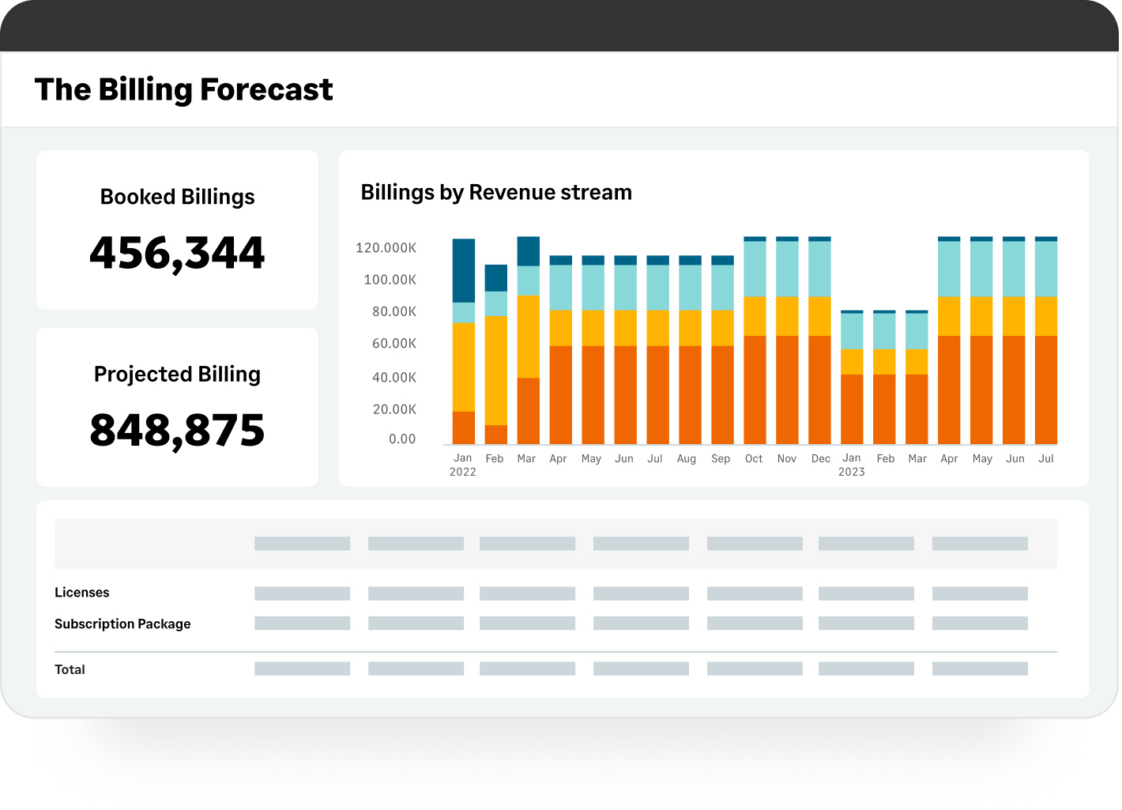Building the gold standard tech stack for SaaS finance
Enhance your SaaS finance operations with a robust tech stack. Explore our blog for expert insights and valuable tips.

In the world of SaaS finance, having a robust tech stack is essential to success. A well-designed SaaS finance tech stack can help you streamline your operations, boost your cash flow, and stay ahead of the competition.
In this post, we’ll be exploring 1) The purpose of your tech stack and why it’s critical to your success, 2) What you should look for in a tech stack, 3) The role of automation in optimizing your tech stack, and 4) Different types of finance tools and the benefits of tech stack integration.
Let’s get going.
Understanding the SaaS finance tech stack
We’ll be candid. SaaS finance is tough to manage effectively and gets even tougher as you start scaling. Recurring revenue organizations have to deal with the complex reality of actively managing every single customer contract and user lifecycle.
This can quickly introduce difficulties for your finance team, opening the door for manual errors, process inefficiencies, and other issues.
Your tech stack helps you manage these workflows effectively.
Purpose of a SaaS finance tech stack
Your tech stack helps you take control of your financial data and workflows. The various types of accounting software that comprise a SaaS finance tech stack accomplish multiple goals, including:
- Minimizing manual errors
- Providing visibility into your cash flow
- Using process automation to boost operational scalability
- Freeing up time for high-level strategizing
How else can your choice of tools set your company up for success?
Key components of a SaaS finance tech stack
Most SaaS finance tech stacks include a few “must-haves” that are crucial for recurring revenue companies.
We’ll review different tech stack elements in more detail later in this post. But it’s helpful to have a brief overview for clarity. Some key components of your SaaS finance tech stack include:
- Reporting and forecasting: These two crucial workflows form the backbone of SaaS success. Make sure to select tools for your department that give you backward and forward clarity on your cash flow.

- Compliance tools: Staying on top of SaaS compliance can be a full-time job in and of itself. Revenue recognition requirements for recurring revenue companies are complex. And when you factor in the challenge of managing evolving regulations, the difficulties only compound.
- Subscription management: Most SaaS tech stacks will have a tool dedicated to keeping subscription management manageable. As with compliance, this can quickly spiral out of control as you scale if you rely on manual workflows.
- Churn and sentiment analysis: Because churn and customer sentiment play vital roles in a SaaS company’s monthly and annual recurring revenue, you should ensure your tech stack provides in-depth analytics. Cloud-based accounting software uses machine learning algorithms to achieve this.
- AP automation: Payables can quickly become a hassle for a growing company, and many tech stacks will provide features that streamline an organization’s AP and AR workflows.
Now that you know more about SaaS finance tech stacks, we’ll explore the relationship between AI and your tech stack. What potential does AI hold for SaaS CFOs and finance teams?
The role of automation in a SaaS finance tech stack
Automation plays a crucial role in optimizing finance operations by eliminating manual errors and offloading repetitive tasks so employees can focus on truly valuable work.
Automation–and, in particular, GenAI–helps SaaS organizations maximize their resources, achieving more with less.
3 benefits of SaaS finance automation
Automation in SaaS finance offers a wide range of advantages for accounting teams and finance leaders.
- AI can eliminate manual errors across your entire department.
Since your SaaS finance tech stack stretches across your entire team, embracing automation can permanently end manual employee errors.
However, it’s important to realize that with the right AI solution, you and your employees will still be in control.
You guys will still be calling the shots and signing off on everything. But the process of drumming up those final products for review–financial reports and forecasts, and all the rest–will be much more efficient and accurate.
- AI improves your relationship with your company’s SaaS metrics.
As a SaaS CFO, you can’t make profitable financial decisions without trustworthy and up-to-date data.
In a legacy accounting department, metrics are painstakingly updated in spreadsheets. This is a lengthy process, meaning your KPIs are often outdated and operationally worthless when they finally make it to you.

By incorporating AI into your financial reporting, you’ll have access to dozens of constantly updated SaaS metrics. Remember, your campaigns and strategies are only as effective as the data they’re based on.
- Automation cuts out growing pains and makes scaling seamless.
Scaling a recurring revenue company is hard work. As we mentioned earlier, subscription companies must meticulously manage every customer relationship from beginning to end. If you rely on a manual tech stack, you’ll eventually hit a point where its efficiency tops out and begins to decline.
After a while, you’ll have outgrown it entirely. And then you’re right back at square one, researching tech stacks. The beauty of cloud-based AI is that it never hits a point of diminishing returns.
Since it relies on algorithms instead of human brainpower, it can keep up with the accounting demands of 10,000 users as easily as 100.
Now let’s expand on the brief overview we gave earlier: what are the essential elements of your SaaS finance tech stack?
Essential tools for a SaaS finance tech stack
Since SaaS finance is complex and layered, your tech stack should have multiple components. Many companies are embracing tech stack integration, combining numerous accounting tools in a single piece of software.
We’ll touch more on that in a moment. But first, let’s look at the individual components of a tech stack–after all, even integrated tech stacks can be broken down into these same pieces.
Accounting automation software
Accounting automation software is pivotal in maximizing the efficiency of SaaS finance workflows. We already covered how AI reduces manual errors and improves scalability, but automated accounting software also:
- A central system of truth that is audited for compliance
- Organized chart of accounts for the dimensions you use in reporting
- Helps you spot user sentiment trends in your financial data.
- Enables the comparison of different SaaS billing methods and their estimated revenue.
- Provides real-time scenario analysis for your forecasting.
- Gives you total transparency into your cash inflows and outflows.
What else usually goes into a SaaS finance tech stack?
Subscription management tools
Subscription management tools are key for helping SaaS companies manage customer lifecycles over time.
This portion of your tech stack assists you in:
- Tracking and storing subscription data: As your transactional volume grows, accurately managing customers’ subscription data becomes much more complicated. Subscription management tools help finance teams deal with onboarding, renewals, cancellations, and other subscription events.
- Linking with your payment gateway: A reliable payment processing system helps prevent involuntary churn. Involuntary churn occurs when customers’ payments can’t be processed and their subscriptions are automatically canceled. There’s no guarantee of getting these users back, so it’s essential to make sure your subscription-related payment processing is squared away.
- Eliminating subscription errors: Subscription-related manual errors directly threaten your recurring revenue and customer relationships. If an employee accidentally cancels a customer subscription during manual upkeep, that’s a serious problem. Subscription management software provides process guardrails that keep errors like that from occurring.
However, that’s not all that goes into a well-rounded SaaS finance tech stack.
Revenue recognition software
Revenue recognition for subscription SaaS organizations involves a 5-step process rooted in ASC 606, a United States accounting regulation.
Meticulously following each step for every customer you have is required to legally report your revenue. And maintaining compliance at scale can be extremely difficult if you handle it manually.

Revenue recognition software helps SaaS CFOs avoid non-compliance fines, revenue leakage, and the never-ending stress of compliance worries.
Now that you know what goes into an optimally constructed tech stack, let’s review the benefits of unifying these various tools.
Two benefits of tech stack integration
Tech stack integration is a simple but powerful concept that’s been picking up steam among SaaS CFOs. An integrated tech stack bundles all the tools we just discussed into a single software solution.
This carries three major benefits for subscription SaaS companies.
You’ll save significant time, money, and stress
When you purchase and pay for every element of your tech stack separately, it’s only natural that you can expect to spend more time and cash on the endeavor.
If you purchase your tools from different vendors, you now have a handful of different companies you’ll need to work with for troubleshooting any problems. It’s a huge hassle.
By contrast, when you use an integrated tech stack, you’ll have a single account manager who takes the time to know your company and goals and ensures that your entire tech stack runs optimally.
Scaling your company will be easier
An integrated tech stack puts every tool your finance team needs in one centralized location. That may sound like a simple benefit, but as your base of customers begins to take off, process centralization is more than just a convenience.
Having financial tools spread across different applications is the single-team equivalent of data siloing. When you silo your data, you scatter it across different teams, impairing visibility and strategic decision-making.
The same holds true with a disjointed tech stack. You’ve spread your data across different tools within the same team, but many of the results of traditional data silos–limited visibility, decreased effectiveness, higher error rates–still apply.
If you want to scale seamlessly, taking a scattershot approach to your data is a non-starter. Tech stack integration can streamline your growth journey and improve your bottom line.
Transform your SaaS finance operations with a robust tech stack
Finance leaders at small businesses and large organizations alike stand to benefit from tech stack integration. Many SaaS CFOs now include it among their best practices.
Business leaders at subscription companies find that spreading out their tools makes it harder to manage data entry, meet subscription-related customer needs, and maintain business process efficiency.Integrating your department’s financial tools into a single application can dramatically boost your productivity and effectiveness. And when you combine the benefits of centralization with the power of workflow automation, the view gets better and better. To learn more about tech stack integration and automation, check out our product demo: Sage Ahead for Startups: A Complete FinOps Tech Stack.
Sage Ahead for Startups: A Complete FinOps Tech Stack
Watch this demo to see how CFOs, RevOps, Controllers, and Finance Teams can quickly deploy innovative subscription billing models for friction-free billing, with investor-grade SaaS reports and forecasts to help drive revenue growth.







Ask the author a question or share your advice